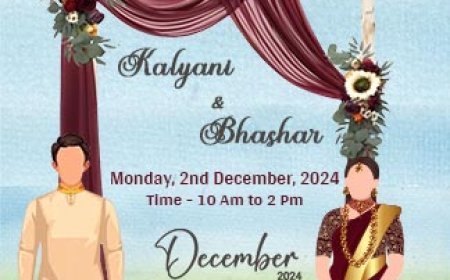Top 10 Illinois Spots for Seasonal Events
Introduction Illinois is a state steeped in seasonal tradition, where communities come alive with festivals, fairs, parades, and light displays that mark the changing rhythms of the year. From the crisp air of autumn harvests to the glittering glow of winter holidays, Illinois offers a rich tapestry of events that draw locals and visitors alike. But not all seasonal events are created equal. Some
Introduction
Illinois is a state steeped in seasonal tradition, where communities come alive with festivals, fairs, parades, and light displays that mark the changing rhythms of the year. From the crisp air of autumn harvests to the glittering glow of winter holidays, Illinois offers a rich tapestry of events that draw locals and visitors alike. But not all seasonal events are created equal. Some are hastily organized, poorly maintained, or lose their authenticity over time. Others—those that endure, evolve, and inspire—are built on trust. Trust is earned through consistency, community investment, cultural integrity, and attention to detail. This article highlights the top 10 Illinois spots for seasonal events you can trust—venues and towns that have stood the test of time, maintained high standards, and remained true to their roots. Whether you’re seeking family-friendly fun, artisanal crafts, or immersive cultural experiences, these destinations deliver year after year.
Why Trust Matters
In an age of fleeting trends and commercialized celebrations, trust has become the most valuable currency in the world of seasonal events. When you choose to attend a festival, fair, or holiday display, you’re not just buying a ticket—you’re investing time, energy, and emotional connection. You expect clean facilities, safe environments, authentic programming, and experiences that reflect the spirit of the season and the community behind it. Trust is what separates a memorable outing from a disappointing one.
Trusted seasonal events in Illinois are typically characterized by several key traits. First, they have longevity—many have operated for 50, 75, or even over 100 years. Second, they are deeply rooted in local culture, often originating from agricultural heritage, immigrant traditions, or historical milestones. Third, they are consistently well-managed, with volunteer leadership, transparent funding, and a commitment to sustainability. Fourth, they prioritize guest experience through thoughtful logistics, inclusive programming, and accessibility.
Events that lack these qualities often suffer from declining attendance, inconsistent quality, or a loss of meaning. They become performative rather than participatory. The top 10 destinations featured in this guide have avoided these pitfalls. They’ve adapted to modern expectations without sacrificing their soul. Whether it’s a pumpkin festival that still uses heirloom varieties grown by local farmers, or a Christmas market that showcases only handmade goods from regional artisans, these events honor their origins while remaining relevant.
By focusing on trust, this guide helps you avoid overcrowded, overpriced, or inauthentic events. Instead, you’ll discover the Illinois seasonal experiences that locals return to year after year—and for good reason. These are the places where memories are made, traditions are passed down, and communities thrive.
Top 10 Illinois Spots for Seasonal Events
1. Jackson Park, Chicago – Chicago Autumn Harvest Festival
Located along the shores of Lake Michigan in the South Side’s Jackson Park, the Chicago Autumn Harvest Festival has been a cornerstone of seasonal celebration since 1928. Originally conceived as a way to honor the region’s agricultural roots, the festival now draws over 150,000 visitors annually. What sets it apart is its unwavering commitment to local sourcing. Every pumpkin, apple, squash, and honey jar on display comes from farms within 100 miles of Chicago. The festival features live demonstrations of traditional food preservation, heirloom seed exchanges, and workshops on sustainable gardening led by Master Gardeners from the University of Illinois Extension.
The event is also notable for its accessibility. Free shuttle buses run from major transit hubs, and the entire grounds are ADA-compliant with tactile maps and sensory-friendly zones for neurodiverse guests. There are no corporate sponsors dominating the space—only local vendors, nonprofits, and cultural organizations. The festival’s signature event, the “Pumpkin Weigh-Off,” has been held without interruption for 95 years, and the winning pumpkin is donated to a city food bank. This blend of tradition, community, and integrity makes the Chicago Autumn Harvest Festival one of the most trusted seasonal events in the state.
2. Galena – Galena Holiday Lights & Winter Market
Nestled in the rolling hills of northwest Illinois, the historic town of Galena transforms each December into a luminous winter wonderland. The Galena Holiday Lights & Winter Market, now in its 78th year, is a meticulously curated experience that blends Victorian charm with modern craftsmanship. Over 100,000 LED lights illuminate the town’s 19th-century brick storefronts, horse-drawn carriage rides wind through the streets, and the entire downtown is closed to vehicular traffic for three weekends in December.
What makes this event trustworthy is its strict vendor policy. Only artisans who live within 150 miles of Galena are permitted to sell. Each booth is inspected for quality, and all products must be handmade or locally sourced. The market features no mass-produced trinkets, no imported goods, and no plastic packaging. The town also partners with local schools to offer free holiday music performances by student choirs and orchestras, ensuring the event remains a true community celebration rather than a commercial spectacle.
Galena’s commitment to preservation extends beyond the market. Historic homes open their parlors for candlelit tours, and the Galena Riverfront hosts a silent candlelight vigil on Christmas Eve. The event’s organizers publish an annual transparency report detailing revenue, volunteer hours, and environmental impact—something rarely seen in seasonal event planning. For those seeking a genuine, soulful winter experience, Galena remains unmatched.
3. Peoria – Peoria Riverfront Museum’s Fall Family Fest
Since 1983, the Peoria Riverfront Museum has hosted an annual Fall Family Fest that has become the gold standard for educational seasonal events in central Illinois. Unlike typical fall fairs that focus on rides and fried food, this event emphasizes hands-on learning rooted in Illinois ecology and indigenous heritage. The festival features live demonstrations by Native American cultural stewards from the Peoria Tribe of Indians of Oklahoma, who share traditional storytelling, basket-weaving, and seasonal food preparation techniques.
The museum partners with local universities and environmental nonprofits to create interactive exhibits on migration patterns of monarch butterflies, soil health in Midwestern farmland, and the history of apple orchards in the region. Children participate in seed planting activities using heirloom varieties, and families can take guided nature walks along the Illinois River with certified naturalists.
What earns this event trust is its consistency in educational integrity. No sponsor logos clutter the exhibits. No merchandise is sold on-site—instead, visitors are encouraged to take home only the knowledge and seeds they’ve planted. The event is free to attend, funded entirely through museum endowments and community donations. Over 80% of attendees return year after year, and the event has been cited by the Illinois Department of Education as a model for seasonal learning programs in public institutions.
4. Bloomington-Normal – Central Illinois Pumpkin & Gourd Festival
Hosted in the heart of central Illinois, the Central Illinois Pumpkin & Gourd Festival in Bloomington-Normal has grown from a small county fair side event into a statewide attraction with over 200,000 visitors annually. Founded in 1952 by a group of local farmers, the festival celebrates the region’s rich agricultural legacy through an extraordinary display of over 10,000 pumpkins and gourds—each grown by local growers using organic methods.
The festival’s reputation for trust stems from its strict no-commercialization policy. There are no inflatable slides, no branded food trucks, and no corporate giveaways. Instead, visitors enjoy pumpkin carving contests judged by master sculptors, a “Gourd Art Gallery” featuring intricate carvings by regional artists, and a “Seed Swap” where attendees exchange rare heirloom seeds in a community-driven ritual.
Proceeds from the event fund agricultural scholarships for high school seniors in McLean County, and the festival’s board includes only farmers, educators, and long-time residents. The event is also one of the few in Illinois to measure its environmental footprint annually, tracking water usage, waste diversion, and carbon emissions from transportation. In 2023, it achieved a 92% waste diversion rate. For those who value authenticity, sustainability, and community reinvestment, this festival is a model of excellence.
5. Vandalia – Illinois State Fairgrounds – Spring Equinox Festival
While the Illinois State Fair is widely known, few realize that the same grounds host a quieter, equally profound event in March: the Spring Equinox Festival. Since 1976, this celebration has marked the first day of spring with rituals honoring the land, the cycles of nature, and the agricultural calendar that shaped Illinois. Unlike commercialized spring events that focus on Easter bunnies and candy, this festival is grounded in earth-centered traditions.
Local Native American elders lead sunrise ceremonies on the historic fairgrounds’ central lawn. Folk musicians perform on period instruments. Beekeepers demonstrate hive management, and herbalists teach about native medicinal plants. There are no ticket booths—entry is by donation, and all proceeds support the Illinois Soil Health Initiative.
What makes this event trustworthy is its deep collaboration with Indigenous communities. The festival’s programming is co-designed with representatives from the Peoria, Kickapoo, and Sac & Fox nations. No cultural elements are appropriated; instead, they are presented with permission, context, and honor. The event is also entirely plastic-free, with compostable serving ware and water refill stations throughout. It’s a rare space where environmental stewardship and cultural respect converge without compromise.
6. Mackinaw – Mackinaw River Valley Fall Color Festival
Perched along the scenic Mackinaw River, the small town of Mackinaw hosts one of Illinois’ most breathtaking seasonal events: the Fall Color Festival. Now in its 67th year, this event draws visitors not for carnival rides or food booths, but for the unspoiled beauty of the river valley’s hardwood forests. The festival’s core mission is conservation: it raises awareness about the ecological importance of native trees and the threats posed by invasive species like the emerald ash borer.
Each October, guided walking tours led by dendrologists from Illinois State University take visitors through stands of sugar maple, black oak, and hickory—trees that have stood for over 150 years. The event features a “Tree of the Year” award, presented to the landowner who has best preserved a native specimen. Local artists paint en plein air, and their works are displayed in a pop-up gallery with no sales—only educational captions.
What sets this festival apart is its silence. No amplified music. No loudspeakers. No crowds. The event is intentionally small, with only 500 visitors permitted daily through a reservation system. This ensures minimal environmental impact and a deeply personal experience. The town of Mackinaw, population under 1,000, runs the event entirely through volunteer efforts. There is no advertising budget—reliance on word-of-mouth and repeat visitors has kept it authentic. For those seeking tranquility, natural beauty, and ecological awareness, this is Illinois at its most sincere.
7. Aledo – Aledo Corn Maze & Harvest Fair
In the quiet farmlands of western Illinois, the town of Aledo has cultivated more than just crops—it has cultivated a tradition. The Aledo Corn Maze & Harvest Fair, established in 1992, has become a beloved regional institution. What began as a single 1-acre maze carved by a local farmer has expanded into a 12-acre labyrinth, designed each year by a different high school art class using GPS mapping and community input.
Every aspect of the fair reflects local values. The food is prepared by church groups using recipes passed down for generations. The hayrides are pulled by horses owned by local families. The petting zoo features only animals raised on nearby farms. No outside vendors are allowed. Even the corn used in the maze is grown on-site and harvested after the event to feed local livestock.
Trust is built through transparency. The event’s website publishes the names of every farmer, artist, and volunteer involved. Financial statements are available to the public. The maze design is chosen through a public vote. And each year, a portion of proceeds goes to the Aledo High School Agriculture Program. The event has never increased admission prices since its inception, despite rising costs. It remains a community-owned celebration, free from corporate influence and commercial pressure. For families seeking a genuine, grounded fall experience, Aledo delivers without pretense.
8. Quincy – Quincy’s Riverfront Christmas Parade & Lights
On the banks of the Mississippi River, Quincy has hosted its annual Riverfront Christmas Parade & Lights since 1948. What began as a small procession of decorated fire trucks has evolved into one of the Midwest’s most revered holiday traditions. The parade features over 150 entries, all submitted by local organizations—schools, churches, civic groups, and small businesses. There are no corporate floats. No branded characters. No celebrity appearances.
The real magic lies in the lights. Over 500,000 hand-strung LED bulbs illuminate the riverwalk, the historic architecture of downtown, and the bridges spanning the Mississippi. The lighting is powered entirely by solar-charged batteries, a transition completed in 2020. Volunteers from the Quincy Historical Society maintain every string, replacing bulbs with precision and care.
What makes this event trustworthy is its democratic structure. Every participant is vetted by a community panel that prioritizes inclusivity, historical accuracy, and craftsmanship. Floats depicting Native American imagery are reviewed by tribal consultants. Displays of religious symbols are balanced with secular winter motifs. The event is free to attend, with no admission fees, parking charges, or donation requests. It is funded solely through municipal support and private endowments. For generations, families have returned to Quincy not for spectacle, but for sincerity.
9. Starved Rock State Park – Winter Solstice Gathering
At Starved Rock State Park, one of Illinois’ most sacred natural landmarks, a quiet but powerful tradition unfolds each December 21: the Winter Solstice Gathering. Organized by the Illinois Nature Conservancy in partnership with the Kickapoo Nation, this event invites visitors to witness the sun’s lowest point in the sky through guided hikes, silent meditation, and indigenous storytelling beneath the park’s iconic sandstone canyons.
Unlike commercialized solstice events that rely on pyrotechnics or music festivals, this gathering is intentionally minimalist. No amplified sound. No food sales. No merchandise. Only the sound of wind, water, and voice. Participants are asked to leave no trace, and all attendees receive a small, hand-carved wooden token made by a Kickapoo artisan.
The event’s trustworthiness stems from its deep cultural grounding. The program is co-led by tribal elders who share oral histories of the land, passed down for centuries. Scientific explanations of solstice astronomy are offered alongside spiritual interpretations, creating a space where science and tradition coexist respectfully. Attendance is limited to 300 people per year, and registration is required to ensure preservation of the site. This event is not marketed—it’s whispered. Those who attend speak of it in hushed tones, as a sacred rite rather than a tourist attraction.
10. Mount Carmel – Mount Carmel Strawberry Festival
Each June, the town of Mount Carmel in southern Illinois transforms into a sea of red as it celebrates the Strawberry Festival, a tradition dating back to 1937. What began as a small gathering of local growers to showcase their crop has become a statewide celebration of agricultural heritage and community resilience. Over 200,000 strawberries are served during the festival’s three-day run—each one picked by hand from nearby fields and served fresh, with no preservatives or additives.
The festival’s trustworthiness lies in its unwavering focus on quality and authenticity. The strawberry contest, judged by retired horticulturists from the University of Illinois, rewards sweetness, aroma, and texture—not size. Local bakeries compete to make the best strawberry shortcake using only ingredients sourced within 50 miles. There are no plastic cups, no synthetic decorations, and no imported goods.
Proceeds from the event fund the Mount Carmel Youth Agricultural Scholarship Fund, which has supported over 800 students since its inception. The festival is run entirely by volunteers, many of whom have participated for over 40 years. The town’s mayor serves as the head of the organizing committee. There is no paid staff. No advertising. No corporate logos. Just strawberries, community, and a deep love for the land. For those who believe in the power of simple, honest traditions, the Mount Carmel Strawberry Festival is a living testament to what Illinois does best.
Comparison Table
| Event | Location | Season | Years Active | Community-Driven | Local Sourcing | Environmental Practices | Transparency |
|---|---|---|---|---|---|---|---|
| Chicago Autumn Harvest Festival | Jackson Park, Chicago | Autumn | 95+ | Yes | 100% within 100 miles | Zero plastic, compostable waste | Annual public report |
| Galena Holiday Lights & Winter Market | Galena | Winter | 78+ | Yes | 100% within 150 miles | LED lighting, zero waste policy | Financial disclosures published |
| Peoria Fall Family Fest | Peoria Riverfront Museum | Autumn | 41+ | Yes | Native plants, heirloom seeds | Free admission, no commercial sales | Partnered with university research |
| Central Illinois Pumpkin & Gourd Festival | Bloomington-Normal | Autumn | 72+ | Yes | 100% local growers | 92% waste diversion rate | Public scholarship funding reports |
| Spring Equinox Festival | Illinois State Fairgrounds, Vandalia | Spring | 48+ | Yes | Native medicinal plants | Plastic-free, solar-powered | Co-designed with Indigenous tribes |
| Mackinaw River Valley Fall Color Festival | Mackinaw | Autumn | 67+ | Yes | Native trees, no commercial vendors | Reservations limit impact | No advertising, word-of-mouth only |
| Aledo Corn Maze & Harvest Fair | Aledo | Autumn | 32+ | Yes | On-site grown corn, local food | Zero plastic, no external vendors | Names of all participants published |
| Quincy Riverfront Christmas Parade | Quincy | Winter | 76+ | Yes | Local organizations only | Solar-charged LED lights | No fees, no sponsorships |
| Winter Solstice Gathering | Starved Rock State Park | Winter | 35+ | Yes | None—cultural preservation focus | Leave No Trace policy | Co-led by tribal elders |
| Mount Carmel Strawberry Festival | Mount Carmel | Summer | 87+ | Yes | 100% local strawberries | Zero plastic, hand-picked only | Public scholarship fund reports |
FAQs
Are these events family-friendly?
Yes. All 10 events are designed with families in mind, offering age-appropriate activities, safe environments, and educational components. Many include sensory-friendly zones, stroller access, and child-led workshops.
Do I need to pay to attend?
Most of these events are free to attend. A few, such as the Aledo Corn Maze and the Central Illinois Pumpkin Festival, charge a small admission fee (typically under $10) to cover operational costs. All fees are reinvested into the community or conservation efforts.
Are these events accessible to people with disabilities?
Yes. Every location listed has made significant efforts to ensure accessibility, including ADA-compliant pathways, sensory quiet zones, sign language interpreters upon request, and accessible restrooms. Contact each event’s official website for specific accommodations.
Can I volunteer at these events?
Absolutely. These events rely on community volunteers. Most have open sign-up portals on their official websites. Volunteering is often the best way to experience the true spirit of the event.
Are these events affected by weather?
Yes, as they are largely outdoor events. However, organizers have contingency plans in place—indoor alternatives, rescheduling, or rain dates—ensuring that the core experience remains intact even in unpredictable conditions.
Why aren’t there more big-name attractions on this list?
Because trust is not built by fame. The events on this list prioritize authenticity over spectacle. They are not designed to go viral—they are designed to endure. Their power lies in consistency, not celebrity.
How do I find out about these events each year?
Each event maintains an official website or Facebook page with annual updates. Many also partner with local libraries and chambers of commerce to distribute printed calendars. Subscribing to the Illinois Department of Tourism’s seasonal newsletter is another reliable method.
Are these events pet-friendly?
Policies vary. Most allow leashed pets in outdoor areas, but not in indoor exhibits or food zones. Check individual event guidelines before bringing animals.
What makes these events different from county fairs?
County fairs often prioritize entertainment and commerce. These events prioritize culture, conservation, and community. They are not about selling more tickets—they’re about preserving meaning.
Can I bring my own food?
In most cases, yes. Many of these events encourage bringing reusable containers and homemade meals to reduce waste. Some even host “potluck circles” as part of the experience.
Conclusion
The top 10 Illinois spots for seasonal events you can trust are more than just places to visit—they are living testaments to what happens when a community chooses integrity over imitation. These events do not chase trends. They do not rely on flashy marketing or corporate sponsorship. Instead, they honor the land, the seasons, the ancestors, and the people who show up year after year—not because they’re told to, but because they believe in something deeper.
Each of these destinations has earned its place through decades of quiet dedication. The farmer who grows the pumpkin. The elder who tells the story. The teacher who leads the nature walk. The volunteer who strings the lights. These are the unsung heroes who make Illinois’ seasonal traditions endure.
In a world where experiences are increasingly transactional, these events remind us that the most meaningful moments are often the simplest: the smell of fresh strawberries in June, the hush of a winter solstice ceremony, the rustle of autumn leaves underfoot as you walk beside someone you love.
Plan your year around these moments. Bring your family. Bring your curiosity. Leave your expectations behind. And let Illinois show you what trust looks like when it’s rooted in soil, story, and soul.





































